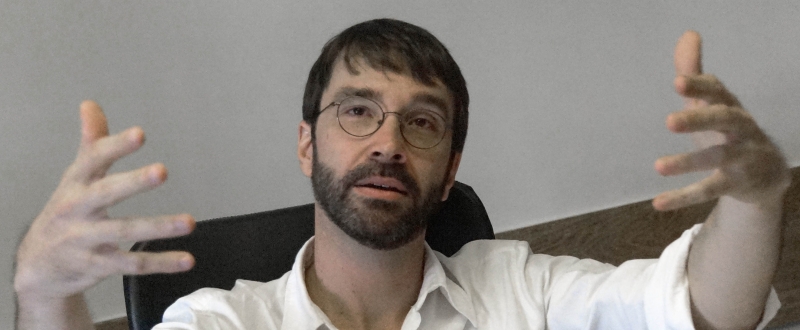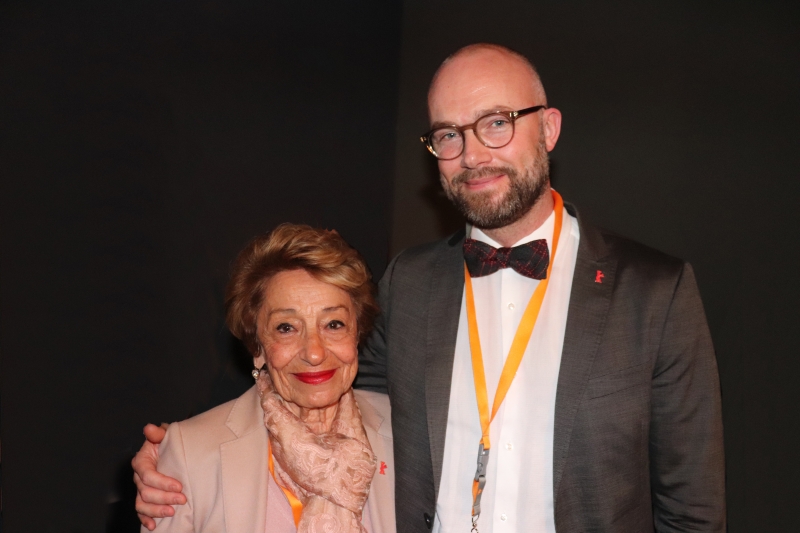|
|
||
|
Pro Tools
FILMFESTIVALS | 24/7 world wide coverageWelcome ! Enjoy the best of both worlds: Film & Festival News, exploring the best of the film festivals community. Launched in 1995, relentlessly connecting films to festivals, documenting and promoting festivals worldwide. Working on an upgrade soon. For collaboration, editorial contributions, or publicity, please send us an email here. User login |
Berlinale 2021: European Film Market in post review
The 2021 Berlinale is being held in two parts, the European Film Market (EFM), restricted to the industry and the press, from March 1-5, and the public film festival, the Summer Special, scheduled for June 9-20 in Berlin cinemas and open air venues with jury members and award winners. The second component, if staged, will continue Berlinale’s tradition as the world’s biggest public film festival. To date, the EFM has been very successful, with achievement similar to that of this year’s online version of Sundance. Underlying the performance of the EFM are structural changes in the film and television industry, the apparently unstoppable impact of large and small streaming services, the shift of viewing habits to home platforms, and the dramatic decline of theatrical distribution. Some industry observers and film critiques, especially in the United States, still maintain film theaters as the crucial distribution pillar, reflecting a deeply engrained perception of film theaters as needed “for the American culture” despite most audiences having shifted to streaming services. As I suggested in prior reports, large low-cost television sets with high image resolution and superb sound, linked to streaming services, have been replacing in theater movie viewing for years. In that context, the discussion of the relative merit of television programs and series compared to feature length films and documentaries has become secondary and sort of academic. After all, television programs have been part of film festivals for a long time. Even before the pandemic, there was a significant increase of home platform viewing options through streaming subscriptions and SVOD services alongside a continued decline in ticket sales. Last year ticket sales dropped in the US by 81 percent and in foreign markets by 68 percent while digital platform revenue rose in domestic and foreign markets by 30 percent. As the 2020 Motion Picture Association report also shows, global subscription revenues rose in 2020 to 1.1 billion, a revenue 26 percent higher than in 2019. Theatrical distribution had the biggest losses with major chains close to or in bankruptcy proceedings. Studios and major production companies were apparently less affected as they adjusted to the new streaming universe and worked closely with the major streaming platforms. The future of the film and television business rests with streaming and to a lesser extend SVOD services. For the smaller audience, interested in sophisticated demanding films, Magnolia Films and Neon are operating their own SVOD services. But the major streamers have extended their lead. In the fourth quarter of 2020 the largest streamers had a global audience of 204 million for Netflix, 150 million for Amazon, 94 million for Disney+. and 38 million for HBO Max, with Netflix having a 38% share of the US streaming viewing time. Four of the 2021 Oscar nominated films premiered on streaming platforms like Netflix and Amazon Prime, with Netflix scoring three. Smaller more specialized distributors worked with platforms like Mubi, YouTube or Neon because these online services provide home viewing alternatives to theatres. EFM continues to serve as the first annual film market and has established itself firmly over many years as an essential market for high quality content productions, including its special emphasis on independent upscale films. Participants this year embraced the new arrangement with its digital format which enabled market access for non-European industry and press representatives. EFM ran parallel Market Hubs in Tokyo, Melbourne, Sao Paolo, and Mexico City, with physical screenings of selections from the 2021 Berlinale EFM showing 19 films, including nine films from the competition section. In addition to the online screenings, during its five days the EFM presented the Berlinale Co-Production Market, the World Cinema Fund Day with the central theme of Decolonizing Cinema, and the Berlinale Talent conference. The conference hosted 205 invited young actual and prospective film professionals from 65 countries this year. Beijing’s Infotainment China Media distributor Cindy Mi Lin observed that the large companies at EFM have grown further with acquisition budgets close to studio levels, ranging from from $70 to $160 million, and that there were virtually no medium-sized films present. Top tentpoles and art house fares did well, with Neon, Cinema Guild, and Kino Lorber able to by rights. But the biggest transactions were caried out by dominating companies. Netflix paid $55 million for the global rights to The Pale Blue Eye Gothic horror film, $18 million for US rights to The Ice Road, and $15 million for the WW II feature Operation Mincemeat. Most of the biggest projects seemed to be picked up in aggressive bidding as did the lower budget art house fare. Global streamers like Netflix and Apple reached an understanding with distributors about films they had acquired. Netflix will show Operation Mincemeat and The Ice Road but consent to theatrical release internationally as specified by prior pre-sale deals as will Apple with its Sundance Coda acquisition. EFM’s online edition attracted 12,000 participants from 131 countries with most coming from Europe, followed by the USA, Canada, Russia ,Brazil, China, and South Korea. 821 film were shown, exceeding the 732 in the 2020 EFM program. These included 578 market premieres as compared to 525 presented last year. The EFM Industry Sessions program had about 90 events followed live by thousands of market attendants and reached 130,000 views. The condensed online film program, over five days, carried about one hundred features accessible in five groups, with each film presented for one day only. Evidently, there was little space to discuss the artistic or political dimension for each film. This was also reflected in general comments by individuals attending the EFM deploring not having enough time for interpersonal exchanges during the dense five day program, though from a commercial perspective EFM was successful. Continuing its identity as the most political of the major film festivals, political contemporary elements were certainly apparent in several of the 15 films selected for the reduced competition and the productions receiving awards. The international jury consisted of six members which were all former Golden bear winners, and a new significant element was the abandonment of gender specific awards. Four of the jury members were present in Berlin and two participated online from their homes in Iran and Israel. The official awards ceremony is to be held in June during the Summer Special when additional prizes will be announced. Among the noteworthy films selected were
The BALLAD OF A WHITE COW by the directors Behtashg Sanaeeha and Maryam Moghaddamn from Iran who wrote the script with Mehrdad Kouroshina. This Iranian feature provides compelling insights in the problems of a legal justice system where erroneous decisions are frequently justified by invoking religion. The film shows the problems an individual faces as a woman in this traditional society when she tries to appeal the sentence of her wrongfully executed husband. She will not accept a pro forma apology and a small finance compensation. The authorities, her neighbors, and her husband’s family refuse to support her. One individual, a stranger, provides help, though he does not reveal that he had signed her husband’s death warrant. The BALAD OF THE WHITE COW is a superbly executed small marvel with outstanding acting by the co-director Moghaddam in the role of the widow Mina. The narrative is persuasive because the presentation is subdued and avoids melodramatic turns though it conveys the message of the need to secularize the criminal justice system, remove socio-political barriers imposed by tradition, and change gender specific norms.
The German production by Maria Schrader, I AM YOUR MAN (Ich bin dein Mensch), depicts a personalized conflict caused by emerging customs and traditional mores. I AM YOUR MAN raises the moral and psychological issues faced in post-modern Western societies when interpersonal relations and communication are replaced by companionships with robots. Alma, a female scientist, agrees to be part of a research project which has the commercial objective of perfecting robots. She reluctantly agrees to live with a male android for several weeks after being pushed by her boss, an ethical advisor for manufacturing androids. This most handsome robot Tom has unlimited memory banks encompassing her past and exceeds her scientific knowledge to the point of correcting her professional mistakes and possibly enhancing her career. He masters all necessary social skills and can answer in a reactive manner any questions. Tom has the programmed objective of making her happier than she is, adjusting constantly the algorithms driving him. But, the dimensions of grief, sadness, and pain, as well as forgetting, remain alien to him. Tom, though poor in flirting, can fill her sexual desires. If perfected, this sophisticated android would be an ideal construction to be rented or purchased in societies characterized by growing social isolation and the parallel decline of human assistance for companionship and help. Unlike Alma’s father who suffers from dementia, Tom and other androids will never develop Alzheimer’s. In her final report, Alma recommends that the development of an enhanced android should not be approved because widespread adoption of hyper-smart robots would threaten family structure and our notion of identity, but she remains attracted to Tom. Helped by the excellent script, her ability to raise prudent questions, and a supportive cast, Moren Eggert received a well deserved Silver Bear for Best Leading Performance.
With A COP MOVIE, a superbly edited production by the Mexican director Alonso Ruizpalacios, Netflix succeed for the third time to place a production into the main competition of the Berlinale. The film is propelled on two parallel tracks encompassing a documentary and fiction approach based on the real life experiences of the two principals Teresa and Montoya. They are former Mexico City Police officers forced to leave their jobs because of work obstacles including corruption. With the help of experts from non-profit groups, Ruizpalacios secured access to the relevant activities of the police department from the everyday activities, the relationships of cops with the communities they serve, and the rather short police training programs candidates must pass. Prospective cops tend to come from families with members who were in the police force or they decided to join for lack of other opportunities. Once in the force, they face the stigma of being part of an oppressive organization and widespread corruption. Everything is traded for cash, be it getting clean uniform, a nice area to serve in or even a squad car. The director reveals contemporary conditions to the viewer by recording the fictionalized private everyday life of Teresa and Montoya based on their stories, the reconstructed training program they had to pass, and the ongoing interactions and conflicts with the community Teresa and Montoya served. There is a blurring between fiction and reality. A COP MOVIE provides a terrific thought-provoking introduction to the problematic police work in Mexico City and received a Silver Bear for Outstanding Artistic Contribution.
LIMBO, directed by Hong Kong’s Soi Cheang and shot in compelling high contrast black and white often in the late afternoon or night hours, is a breathtaking neo-noir presentation or documentation of the seamy underside world of Canton. The settings of LIMBO are immured in trash, debris, garbage, discarded furniture and cars, inhabited by the rejects of society, addicts, small time gangsters, and the homeless that live or work there having no other places to go to. In this setting, rookie policeman Willi, carefully following official regulations, must team up with Cham, a seasoned cop who is driven by solving crime rather than obeying rules. Their task is to find an obsessive murderer that kills and dismembers women, mostly prostitutes, from the underworld of Canton. Cham has a strong personal interest in the case. A young female petty criminal providing leads to solving the case had caused an accident killing his child and impairing his wife. LIMBO offers realistic images of killing, violence, and crimes typical for Hong Kong films including fast car and in person chases. There is also a never-ending amount of rain adding to the bleak and grim atmosphere. Apart from the disputations between Willie and Cham about rule breaking, Cham’s quest to identify the murderer by assembling pieces of the apparent puzzle mesmerizes. LIMBO certainly holds the viewers’ attention given its compelling story line, the bleak dystopian setting, and the acting, particularly that of Kiu Cya, who plays Wong To, the informer.
New York, Claus Mueller filmexchange@gmail.com
26.03.2021 | Berlin's blog
|
LinksThe Bulletin Board > The Bulletin Board Blog Following News Interview with EFM (Berlin) Director
Interview with IFTA Chairman (AFM)
Interview with Cannes Marche du Film Director
Filmfestivals.com dailies live coverage from > Live from India
Useful links for the indies: > Big files transfer
+ SUBSCRIBE to the weekly Newsletter Deals+ Special offers and discounts from filmfestivals.com Selected fun offers
> Bonus Casino
User imagesAbout Berlin Chatelin Bruno Chatelin Bruno
Berlin 2019: The dailies from the Berlin Film Festival brought to you by our team of festival ambassadors. Vanessa McMahon, Alex Deleon, Laurie Gordon, Lindsay Bellinger and Bruno Chatelin...
|

































